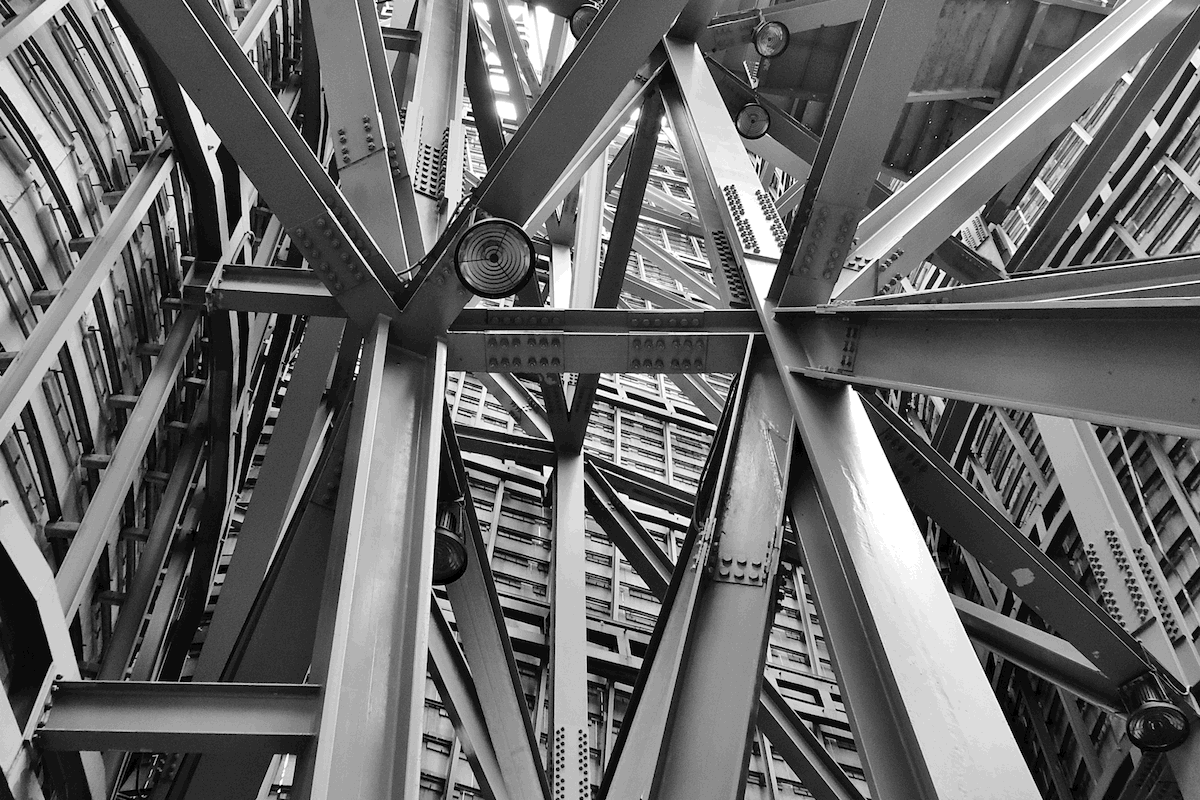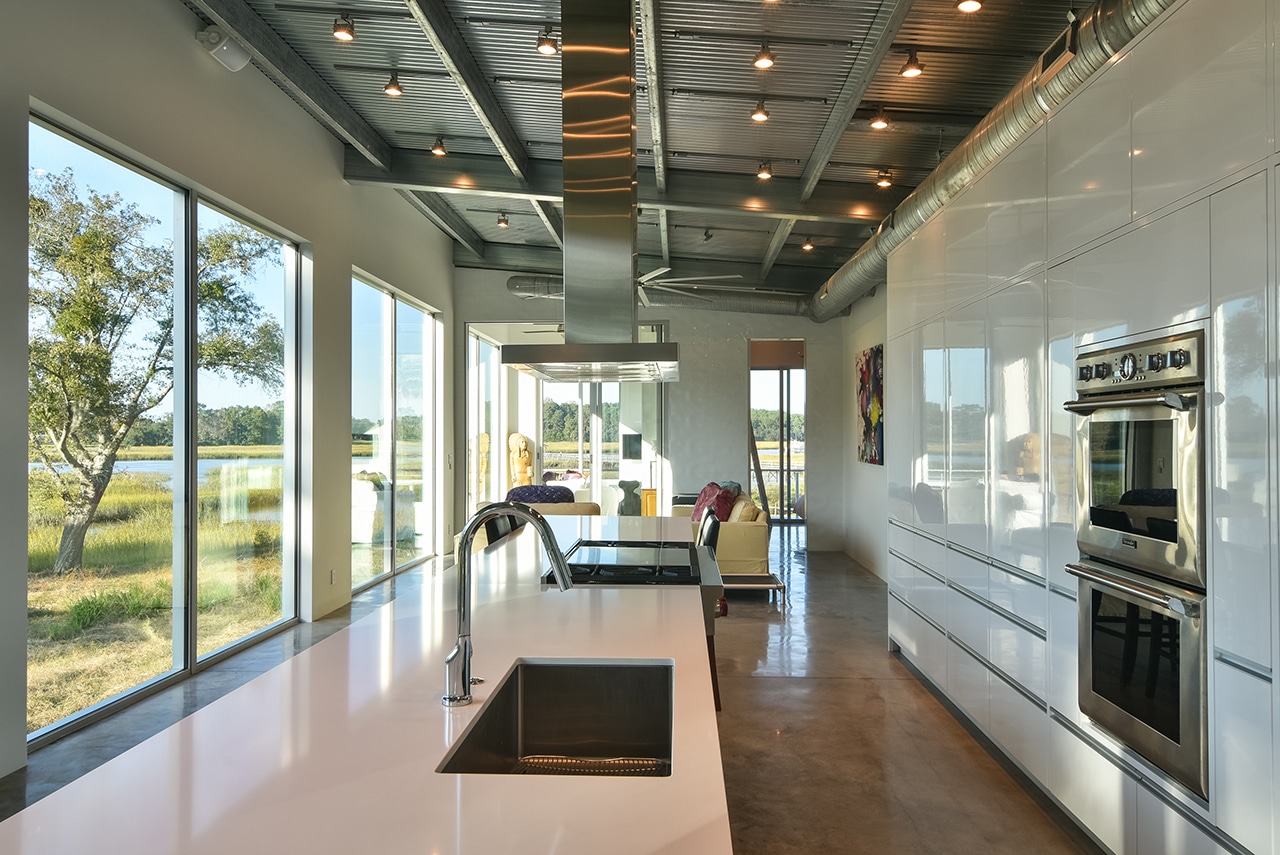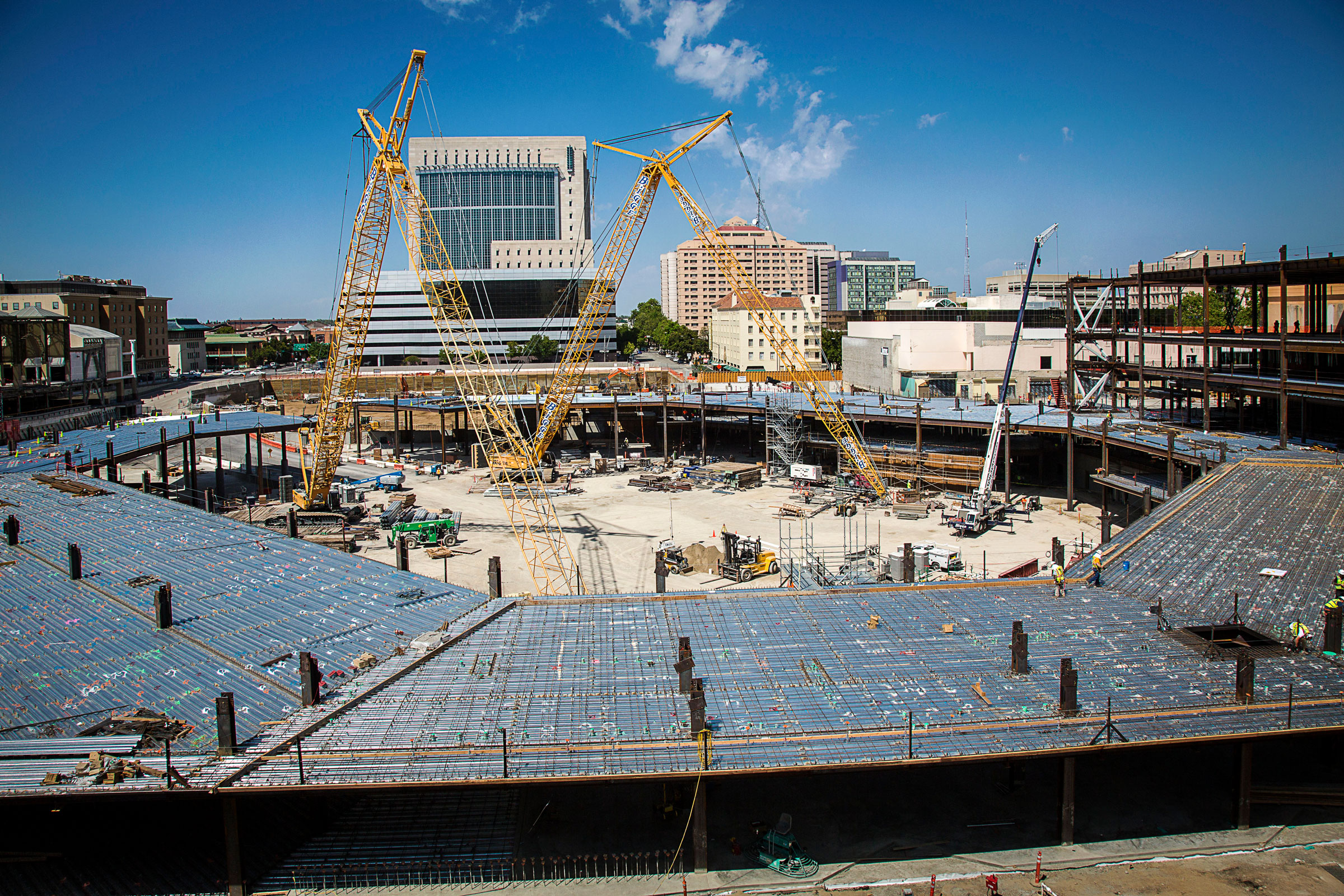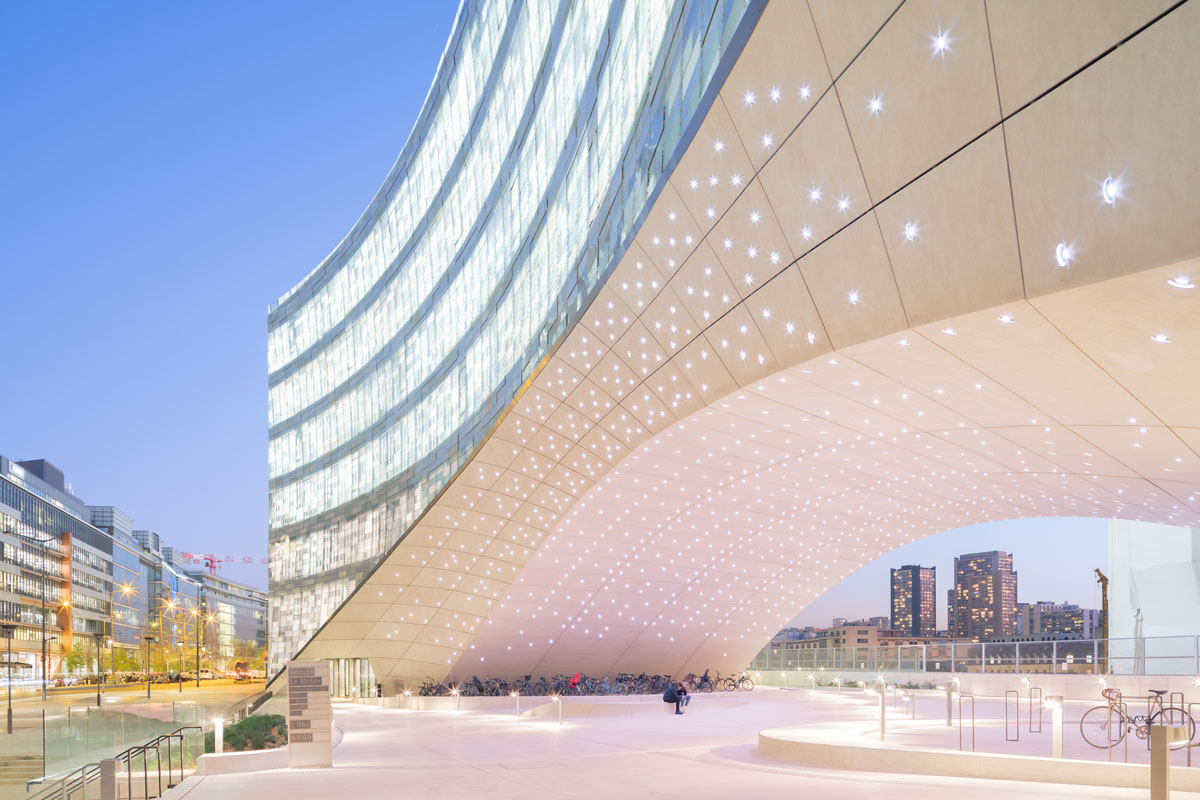Story at a glance:
- Steel is one of the most widely used construction materials in the world.
- Steel is appreciated for its recyclability, long lifespan, and role in mitigating urban heat islands.
- Steel can also help projects earn LEED credits in the categories of materials and indoor environmental quality.
Steel is one of the most widely used materials in construction and is favored for its durability, high compression strength, and long lifespan. In 2022 approximately 94.7 million net tons of raw steel was produced in the US alone, according to the American Iron and Steel Institute.
As more and more construction projects emphasize green building practices, however, the sustainability of some traditional building materials has been called into question.
Steel and steel products are generally considered to be sustainable by most green construction organizations. In fact, steel can even help projects earn LEED credits. Here are a few of the qualities that make steel sustainable.
How is Steel Sustainable?

Steel is highly recyclable, durable, long-lasting, and can help a project earn LEED credits. Photo by Pixabay
Steel is considered to be a sustainable building material for a number of unique reasons:
Efficient Production Processes
In the US virtually all structural hot-rolled steel sections—e.g. columns, wide-flange beams, etc.—are made in electric arc furnaces that use electricity instead of fire to melt steel scrap into new steel. Compared to traditional steel-making methods, electric arc furnaces produce 75% less CO2 emissions.
Stainless steel production—which is fairly intensive in its own right—even has systems in place to reduce energy consumption and conserve materials as much as possible. ACO, a leading producer of high-quality stainless steel drainage systems, for example, has committed to several sustainable measures in their manufacturing facilities.
“Acid recovery systems are put in place to recover 80% of the pickling acid used. Dust and flume extraction units are used to reduce the levels of emissions even more than their current rate,” Gert Laumann, leader of the ACO, Inc. Building Drainage division, previously wrote for gb&dPRO. “The dust from the gasses is then collected and recycled to reclaim the metallic compounds. Even the water that is used for cooling goes through a filtration process and gets recycled up to 100 times before it cannot be reused again.”
Across the steel industry as a whole, approximately 90% of the water used during production is cleaned, cooled, and returned to source, aiding in water conservation practices.
Can Be Recycled

While not visible, recycled steel makes up a portion of the Munch Museum’s main structure. The architects focus on using Norwegian products where possible for the interior. Photo by Einar Aslaksen
One of the driving factors behind steel’s status as a sustainable material is its incredible recyclability; it is one of the only metals used in construction that can be recycled indefinitely without losing its desirable qualities. Once a steel product has reached the end of it’s operation lifespan it can be repurposed as is or melted down and reformed for use in another project, thereby reducing the amount of construction waste.
Steel is so widely recycled that all new steel products contain at least some percentage of recycled content. New structural steel, for instance, contains an average of 93% recycled steel, according to the American Institute of Steel Construction. On average 630 million metric tons of steel is recycled each year, thereby preventing roughly 950 million metric tons of CO2 from entering the atmosphere.
Steel’s magnetism also makes it extremely easy to sort for recycling purposes.
Durable & Long-Lasting
Another reason steel is considered sustainable is its durability and strength—steel is incredibly strong and has a very high compression strength, meaning it can be used to form load-bearing structural elements. Oftentimes, this means fewer support columns are needed to construct steel-framed buildings, meaning fewer resources were needed for the project overall.
“Steel is a strong structural material, and steel framing systems are such that you can usually get very long spans between columns. That’s important because it allows for wide open spaces,” Mark Thimons, vice president of sustainability for the Steel Market Development Institute, previously told gb&d.
What’s more, steel’s durability means it has an extremely long lifespan. On average, steel buildings will last anywhere from 50 to 100 years. Unlike timber and other building materials, steel will not rot, split, or absorb water, nor is it susceptible to damage from insects and other pests.
Some steel is, of course, susceptible to rust, but even that can be mitigated by choosing the right products. ASC Steel Deck’s Smooth Series, for example, uses rivets instead of welding to attach steel deck panels together. “Plated rivets are not susceptible to rusting, which eliminates rust concerns about the riveted cellular deck panels stored before shipment, during shipment, and once delivered and stored on job sites,” Mahsa Mahdavian, technical representative engineer at ASC Steel Deck, previously wrote for gb&dPRO.
In practice this means steel products require minimal maintenance and will not need to be replaced frequently, thereby decreasing the total carbon footprint of a project throughout its entire operational life cycle.
Heat Island Mitigation
When used for roofing purposes the reflective properties of steel can aid in mitigating the so-called heat-island effect, or the phenomenon by which urban areas experience higher temperatures than rural or outlying regions.
This is because steel roofing has a naturally high solar reflectance index, meaning it is highly capable of reflecting solar energy and rejecting heat gain. Steel roofing can also be painted with solar reflective coatings, which further improve solar reflectance.
Overall this aids in passive interior temperature regulation, thereby reducing the need for electrical air conditioning and improving a building’s energy efficiency while also lowering its cumulative carbon emissions.
Tight Building Envelopes & Energy Efficiency

Prefabricated steel buildings go up quicker than if you were to use traditional building materials, as they arrive pre-cut and preinsulated, eliminating the need for a host of traditional subcontractors and saving both time and money. Photo courtesy of EcoSteel
Similarly, steel frameworks make for exceptionally tight building envelopes, which decreases the likelihood of air loss and improves a building’s overall HVAC performance, resulting in lower heating and cooling loads.
When combined with insulated metal panels—of which typically feature a steel exterior as well as a steel interior skin—a steel-framed building can achieve stellar thermal performance and energy efficiency, resulting in fewer greenhouse gas emissions.
Can Earn LEED Points

The Golden 1 Center project, home of the Sacramento Kings, is LEED Platinum-certified and makes extensive use of structural steel. Photo courtesy of ASC Steel Deck
Also consider the fact that USGBC’s LEED program—the premier sustainable building certification system in North America—allows projects to earn credit points for their use of steel.
In general steel can go toward earning points in two categories—Material & Resources and Indoor Environmental Quality.
Material & Resources
One such way a project can earn LEED points is if the product manufacturer is able to provide a Health Product Declaration (HPD), Declare Label, Environmental Product Declaration (EPD), Life Cycle Analysis, Cradle-to-Cradle certification, or other mechanism demonstrating their commitment to product transparency. “Some of the companies that make steel products will have gone through the process of getting one or more of those certifications, and that would allow them to potentially qualify for those LEED credits as well,” Thimons says.
What’s more, most steel product manufacturers in North America publish their corporate sustainability reports regarding the sourcing and extraction of the steel they use. If these reports show tangible proof of a commitment to ethical and responsible land-use and resource extraction, among other environmentally conscious factors, they can help earn LEED credit for ethically sourced building materials.
ASC Steel Deck, for example, is a leading manufacturer of light gauge structural roof deck and floor deck products that has taken steps to improve product transparency. They are one of the first West Coast steel deck manufacturers to offer Product-Specific Type III EPDs, recycled content documentation, third-party verified HPDs, and third-party verified Living Building Challenge Red List Free Declare labels.
“As ASC Steel Deck continues its green journey, we are committed to continuous improvements in our manufacturing processes, supply chain optimization, and our leadership role as an industry partner and environmental steward,” Marie Ortega, a member of ASC Steel Deck’s marketing team, previously wrote for gb&dPRO.
Indoor Environmental Quality
Steel building products can also earn LEED credits in the Indoor Environmental Quality category by being either a low-emitting material or by improving acoustic performance.
Most structural steel products emit very few volatile organic compounds (VOCs), which means they do not contribute to indoor air quality concerns. This is, however, something you’ll need to verify with the manufacturer, especially in cases where paint or some sort of coating is applied to the steel.
Conclusion
Even as a non-renewable resource and despite the steel industry’s relatively large contribution to the world’s annual carbon emissions, steel is still regarded as a sustainable building material by LEED and a host of other green building certification programs. This is largely due to steel’s 100% recyclability, long lifespan, role in mitigating the urban heat island effect, and potential for low-energy manufacturing.




